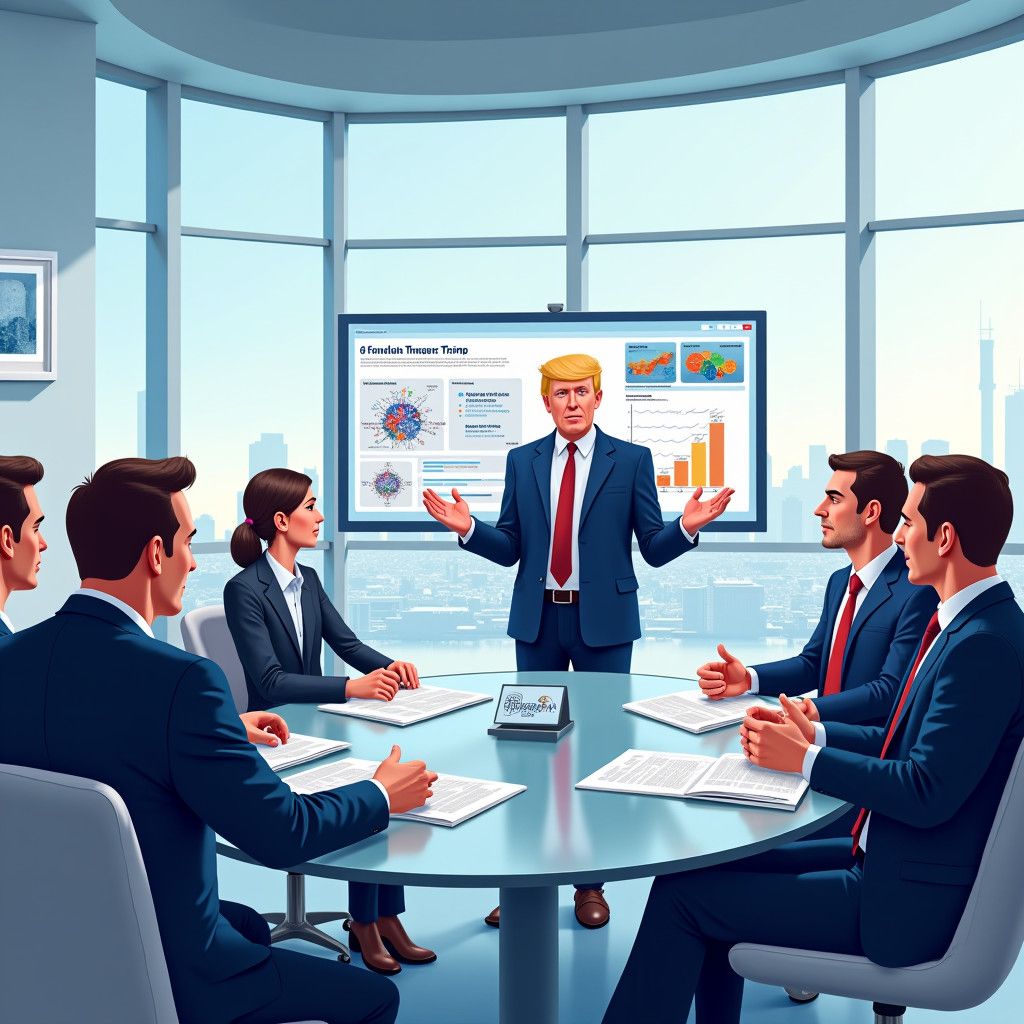As the world watches the rapid advancements in artificial intelligence (AI), one might be surprised to hear a certain political figure mentioned in discussions about the technology’s development. Recent remarks from OpenAI’s CFO have highlighted Donald Trump’s influence in the evolving landscape of AI. This assertion, while it may raise eyebrows, deserves a closer examination as it unveils the intricate intertwining of politics, business innovations, and developments in AI technologies.
A key point made by OpenAI’s CFO revolves around the Trump administration’s policies that inadvertently fostered a more conducive environment for AI innovations. Policy decisions during his tenure highlighted the significance of technology and international competition, particularly with nations like China. Such a stance encouraged American companies to ramp up their research efforts, leading to investments that would change the way we perceive and utilize AI.
To underscore this connection, consider the example of the American tech industry during Trump’s administration. Funding for research in AI saw a notable uptick. The federal government, recognizing the need to remain at the forefront of technological advancements, initiated various programs that incentivized innovation in AI. By establishing partnerships between government agencies and tech firms, new opportunities emerged for startups and established companies alike. This focus on technology paved the way for innovations we see today, from AI-driven analytics to automation solutions.
Moreover, the competitive climate fostered under Trump’s policies placed emphasis on maintaining economic dominance in the technology sector. This environment propelled many firms to innovate actively, thus accelerating the pace of AI development. Numerous firms revealed plans aiming to leverage AI algorithms to enhance their product offerings, which in turn, created a robust market for machine learning and data analytics solutions. A case in point is the rise of AI-driven companies like Databricks and UiPath that have transformed traditional business processes, enabling organizations to perform more efficiently.
Critics may argue that attributing advancements in AI solely to Trump’s administration overlooks the contributions of many stakeholders, including researchers, engineers, and entrepreneurs who have tirelessly worked in the field for years. However, it is crucial to recognize the role that a favorable business and policy landscape can play in facilitating these innovations. The encouragement of research initiatives, alongside capital inflow into AI ventures, played a significant role in boosting interest and investment in the sector.
Furthermore, the ethical considerations surrounding AI development have come to the forefront of discussions, particularly under the scrutiny of regulatory bodies. The rapid development of AI technologies has raised valid concerns regarding privacy, bias, and job displacement. The Trump administration’s stance on such issues, or lack thereof, created a landscape where tech companies had the latitude to evolve quickly without comprehensive guidelines. This combination of freedom and urgency has led to both remarkable advancements and notable challenges.
As we look ahead to 2025 and beyond, the lessons from past political environments could shape future AI regulations and innovations. The tech industry is now faced with not just previous successes and failures but also the challenge of integrating responsible AI practices and ethical standards into future developments. If the U.S. aims to sustain its leadership in AI, industry players must prioritize developing frameworks to ensure that technologies are created and deployed ethically and responsibly.
In the ever-changing sphere of business innovations, the intersection between politics and technology is more significant than ever. The open dialogue about the impact of political figures on technological advancements reflects a larger trend in which business leaders, political policies, and technological evolution influence each other. Recognizing Trump’s unexpected role within this narrative serves as a reminder of how intertwined these domains have become.
As organizations explore the potential of AI, the need for responsible innovation will undoubtedly become a focal point. It will be crucial for both tech companies and government entities to cultivate an environment that fosters advancement while safeguarding societal values. This balanced approach not only spurs growth in the AI sector but also ensures that technological contributions align with societal expectations and ethical standards.
In conclusion, Donald Trump’s influence on AI development, while unconventional, illustrates the complex dynamics between political leadership and technological progress. Acknowledging these connections may redefine how we view the future of AI and innovation in business.












